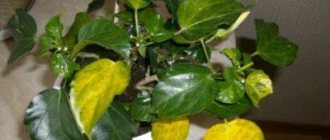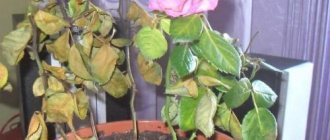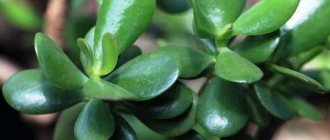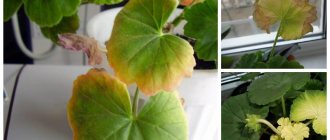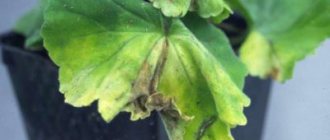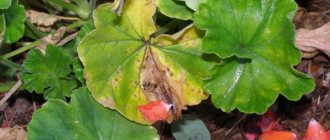Pepper can begin to get rid of future fruits at any stage of their development - the appearance of buds, flowering and the formation of ovaries. Sometimes this problem becomes widespread. What should you pay attention to in such a situation and how to correct it?
First, take a good look at the plants. If they have only dropped a couple of flowers or ovaries, then there is nothing much to worry about. But if the buds on a bush are dropped en masse or even dry out, you should be wary. This means that some of the conditions are categorically not suitable for the nightshade culture, and it uses this simple way to inform you about it. Let's consider all the reasons for what is happening - harmless and not so.
"Extra" buds of pepper
Any cultivated plant leaves itself such a number of ovaries that its root system is able to feed it. Therefore, the fall of a small amount is quite acceptable and there is no need to panic. Some gardeners even recommend picking off the first buds of the pepper themselves, so that the root system of the bush is strengthened and subsequently it grows new healthy ovaries. However, if you are not a supporter of such methods, trust the plants themselves. Believe me, they will throw off everything that bothers them.
The situation takes a different turn when the fall of buds becomes global.
The first signs of a problem
If a plant suffers from unfavorable environmental factors, this is manifested in its appearance - in the condition of roots, shoots, leaves, flowers, fruits.
But the presence of healthy foliage and flowers in seedlings is not a reason to stop monitoring the plantings . After planting in a permanent place, seedlings can drop the fruits that have set.
The harbingers of this may be:
- excessively developed green or, conversely, weak and pale leaf mass in bushes;
- the presence of a transparent web on the leaves;
- weak root system of seedlings;
- other signs depending on the stress factor.
Pepper has a large number of stepsons
Like another nightshade crop - tomatoes - the shoots of peppers must be removed. Only bushes of determinate varieties can avoid this fate, which inactively form stepchildren, and no more than 10 ovaries are “thrown away” on the main branches. In other cases, pinching pepper is considered one of the mandatory procedures. In addition to the stepsons, you also need to remove the “crown” flowers remaining on the plant - those that form on the fork of the main shoot.
- How and why to plant peppers
Understanding the formation of peppers is very simple. You just have to carefully examine the bushes.
Advice from experienced gardeners
Experienced summer residents and gardeners share the following recommendations :
- marigolds, nasturtium, and onions planted between rows protect peppers from pests;
- pepper does not tolerate transplantation well, so it is better to sow seeds for seedlings immediately in separate containers;
- in conditions of excess light, shading is provided by planting peppers surrounded by larger plants - for example, tomatoes;
- It is better to fertilize with ash not during planting, but during the period of ovary formation;
- different methods of shaping bushes affect the number or size of pepper fruits;
- for better fruiting, unnecessary shoots and leaves below the first branch are removed;
- About a month and a half before the end of the season, the growing points (tips of skeletal branches) are pinched so that the plant stops growing and the formed fruits have time to ripen.
Temperature changes when growing peppers
In the second half of summer, the daytime temperature still holds its own, but at night your bushes may be cool. This applies to both air and ground temperatures. As a result, you may observe curling of pepper leaves, as well as loss of ovaries by the plant. To correct the situation, reduce the difference between day and night temperatures: ventilate the plantings during the day and place containers of water near them, and on cool nights, completely close the greenhouse or install an automatic ventilation system there. In open ground, cover plants at night. Mulch the soil under the plants, but renew the layer of mulch every 3-4 weeks.
- 10 mistakes you make when mulching
An agrotechnical practice such as mulching, which is beneficial for soil and plants, can be harmful if mistakes are made when performing it.
Measures to combat the problem
Various circumstances: depleted soil, unsuccessful vegetable planting scheme, humidity level (far from optimal), violation of the watering and fertilizing regime - all this can lead to the fall of the ovaries of peppers, flowers and leaves. If you intend to reap a rich harvest, these problems are worth fighting. How? Let's talk about it.
We organize proper pepper care
Every experienced gardener knows the basic rules for caring for a plant. They are the key to a really good harvest. First of all, you need to plant the peppers correctly - at a distance of 30-40 centimeters from each other in the case of a low-growing variety and 60 centimeters - when it is tall.
And after planting, the most important thing is the optimal atmosphere in the greenhouse. And it is achieved by regular watering, ventilation, and fertilizing of plants.
We fight insects
If the plant is entangled in a whitish web, it has been attacked by a spider mite or greenhouse whitefly. This type of problem can be dealt with by spraying. An infusion of chamomile or yarrow is suitable for these purposes. Or you can even use some special drug such as Fitosporin or Fitoverm. But even before planting, the soil should be carefully cleaned and cultivated.
We stimulate pollination of plants
Use an agrotechnical method such as forced pollination on a regular basis. Save the ovaries on the plant. This event is carried out by simply shaking the plants, usually at the beginning of the day.
But you can do it differently. Use a cotton swab on a match to transfer pollen from one flower to another. It is best to pollinate peppers at a temperature of +23…+25 ℃. When the air warms up to +30 ℃, the pollen dies; up to +35 ℃ – ovaries and young fruits begin to fall off.
Irregular watering of peppers
Peppers can drop buds both from underwatering and from overwatering. At the root of the plant, water 1-2 times a week with warm water at the rate of 15-20 liters per 1 sq.m. In this case, the soil under the bushes should be moistened to a depth of at least 25-30 cm. However, if the temperature outside the window does not reach 15°C, watering should be suspended to avoid some crop diseases.
It is also important to follow the general rules for watering plants: water the plants in the morning (before the sun) or in the evening (after it). The ideal solution to the problem is drip irrigation.
- There is a question: why is drip irrigation needed on the site?
Drip irrigation systems are on the agenda. Do they make sense if we are talking about an ordinary summer cottage?
Prevention measures
Preventive measures will help prevent flowers and ovaries from falling off, as well as other problems when growing peppers.
Basic rules of prevention:
- Lighting - make sure that the pepper is not in direct sunlight in the heat, but is not completely covered in shade.
- Humidity - if it is below 65%, pepper bushes must be regularly sprayed with a spray bottle. If it is above 80%, ventilate the greenhouse.
- Soil temperature - pepper seedlings are planted only in well-warmed soil; in cold soil they will not be able to take root and bear fruit.
- Planting pattern - when planting peppers, ensure the density of the bed and leave at least 30 cm between plants.
- Formation - do not forget to cut off excess buds and shoots. This stimulates fruiting and reduces the load on the bush.
When growing peppers in a greenhouse, it is important to properly prepare the soil for planting. 15-20 days before planting the pepper, it must be disinfected with a weak solution of potassium permanganate.
Lack of lighting when growing peppers
Experts say that pepper lighting is closely related to the air temperature outside the window. So, in hot weather (about 30°C) the luminous flux should be bright. But in cloudy weather in summer, the temperature should be kept within 20-22°C. However, during hot weather in bright light, another problem may arise: the plants may wilt slightly. This can be solved by providing the bushes with shelter in the form of a light, breathable material.
- Pepper leaves wither - what to do
Pepper leaves droop, curl and lose turgor - what could this mean and how to help the plant?
Why do the ovaries of peppers fall off?
The culture is demanding of care . At the first signs of falling fruit ovaries, first of all, find out the cause.
Lack of light
The ideal length of daylight for the growth and development of peppers is 12 hours . Lack of lighting negatively affects plants - in such conditions, seedlings do not absorb nutrients well and grow weak.
If there is still enough strength for flowering, then further development is inhibited. Weak flowers fall, ovaries do not form.
Lack of moisture
The root system of peppers is almost entirely located in the upper layers of the soil , so the slightest lack of moisture negatively affects the entire plant. The soil should be sufficiently moist, especially during the period of ovary formation and fruiting. Otherwise, the receipt of nutrients and further development of the crop are stopped. Already formed ovaries fall off.
Important! Excess water poses no less a threat to the plant than its lack. Excess moisture provokes the appearance of rot and various diseases.
Dry air
A common reason for the ovaries to fall off is inappropriate air humidity. For peppers the figures range from 60% to 80% . In dry air, it is more difficult for plants to absorb nutrients, they dry out and do not form fruits.
Poor soil composition
The natural mechanism of self-preservation forces plants to shed formed flowers and ovaries during periods of danger and stress.
A danger to the life of the culture is nutritional deficiency , which disrupts metabolic processes and reduces immunity. This occurs due to a lack of nitrogen, phosphorus, potassium and other elements in the soil. They contribute to the formation, development and ripening of fruits, and their absence causes real stress in peppers. As a result, the leaves turn yellow and fall off, the shoots wither, and the ovaries die.
Basic recommendations for replenishing important substances:
- in light and sandy soil, peppers lack potassium, iodine, magnesium and bromine;
- if the soil is limed, the plants lack manganese, zinc and boron;
- In peat soil, vegetables develop a deficiency of potassium, copper and manganese.
Pollination problems
This problem often occurs in an unventilated greenhouse . The plants have bisexual flowers, so light air movement is enough for them to pollinate. If this does not happen, the flowers fall off.
Planting density
In the struggle for the harvest, greed will not help. Peppers cannot be planted close to each other - this will result in no more vegetables. Dense planting will result in plants competing for light, water and nutrients . In such harsh conditions, not all bushes will receive the nutrition necessary for development, which will lead to the death of the ovaries.
Attention! 3–6 peppers are placed per 1 m² of land, depending on the size of the bushes. This will create favorable conditions for air circulation and prevent plant competition.
Temperature changes
Unstable temperature indicators negatively affect the reproductive abilities of vegetable crops. They reduce plant adaptation, disrupt flowering and fruit formation. Acceptable values for seedlings are +20...+22°C, for adult peppers - +15...+18°C.
But it’s not just cold weather that has a detrimental effect on vegetables. An increase in temperature to +35°C also leads to the fall of the ovaries and the death of plants.
Diseases and pests
Seedlings and already formed plants are weakened by attacks from pests and diseases. If all the forces of a culture are spent fighting bacteria, fungi and insects, reproduction is impossible, and for self-defense the bushes get rid of inflorescences.
Common pests of peppers:
- Whiteflies are small white butterflies that lay eggs on the undersides of leaves. The emerging larvae suck out plant juices, and the bushes wither.
- Spider mites are microscopic arachnids, the presence of which is indicated by small spots on the stems and leaves of peppers and cobwebs. Ticks feed on the sap of plants - they wither, turn yellow and die.
- Nematodes . These roundworms live deep in the soil and damage the root system of peppers. In affected bushes, yellow-brown thickenings are visible on the roots.
- Mole crickets are large, up to 6–8 cm, insects that dig labyrinths around plantings, damaging the roots of vegetables, causing the bushes to wither and die.
- Garden ants feed on honeydew secreted by aphids, thereby increasing the number of the latter. The result is damaged plants and a risk of disease.
Dangerous cultural diseases:
- Bacterial spotting . Small olive-colored oily spots appear on the leaves, which gradually turn black and grow throughout the bush. The leaves and ovaries fall off, the fruits do not ripen.
- Late blight is a fungal disease in which the plant is covered with brown spots, starting from the leaves and ending with the peppers.
- Verticillium . The leaf blades turn pale and deformed, the bushes dry out, become very small or the fruits do not set.
Unbalanced nutrition of pepper
Not least important is how and what you feed your nightshade crops with. Experienced gardeners claim that peppers can shed flowers and ovaries both from a lack of nutrition and from an excess of fertilizers.
Even before fruiting begins (at the very end of flowering or at the stage of the appearance of ovaries), peppers are fed with a composition of 10 g of ammonium nitrate, 25 g of superphosphate and 25 g of potassium sulfate, dissolved in 10 liters of water. Instead, you can use complex fertilizers for tomatoes and peppers according to the instructions.
3-4 weeks after this, fertilizing is repeated, removing saltpeter from the composition. In the first half of summer, you can replace mineral fertilizers with a solution of bird droppings (1:20), manure (1:10) or herbal infusion (1:5), and in the second half, use ash infusion (2 cups of ash per 10 liters of water). To avoid causing burns on the roots of the pepper, the bushes are watered beforehand.
Active shedding of buds by a plant can also cause an excess of nitrogen in the soil. In this case, the bush “fattens” - the stem thickens and a thick green mass grows. If this is your case, remove nitrogen from the fertilizing and replace “prefabricated” fertilizers with a humic complex or ash.
The main reasons for the falling of flowers and ovaries
By shedding buds and ovaries, the crop reacts to negative external factors: suboptimal heat, light and humidity, excess or lack of nutrition, insect attack, non-compliance with agricultural practices.
Sudden temperature changes
With sudden temperature fluctuations, the adaptability of the crop decreases, and vegetation processes are disrupted, including flowering and ovary formation. The optimal temperature for pepper is 20-23°C.
Pepper seedlings are most susceptible to temperature fluctuations. Mature bushes are stronger and can withstand temperatures from +15°C.
Heat is no less dangerous for peppers than cold weather. When the thermometer shows more than +35°C, the plants may not only lose their flowers, but also die. An increase in temperature even to +30°C already negatively affects the condition of pollen and the quality of pollination of flowers.
Unsuitable soil
When there is not enough nutrients in the soil, pepper withers, its growth is inhibited, and metabolism in plant tissues is disrupted. To save life, the bush is forced to shed energy-consuming parts - buds and ovaries.
Usually the problem of dropping flowers is associated with a lack of basic mineral elements in the soil:
- nitrogen necessary for stem growth and increasing green mass;
- phosphorus, which promotes the development of the root system and the formation of ovaries;
- potassium, which helps the fruits ripen and increases the pepper's resistance to negative external factors.
Preventive measures
The best way to avoid mistakes is to not make them. Prevention prevents possible problems . They start by cleaning the area or greenhouse; the soil is disinfected with a solution of potassium permanganate (5 g per bucket of water). This will destroy bacteria, get rid of pests, and stimulate biological processes. In the spring, before planting, the soil is dug up with humus and complex mineral fertilizers.
After planting, peppers are fed once every 2 weeks, alternating mineral and organic fertilizers.
Monitor air and soil humidity , inspect foliage and stems for pests and signs of disease.
High temperature
Flowers fall and peppers turn black
In summer, the crop may experience too hot weather, during which the flowers will fall off the peppers. This is especially dangerous for plants grown in greenhouse conditions. Temperatures above 30˚С are harmful to pollen, and above 35˚С - to flowers.
To establish the optimal level of heat, grass clippings are laid between the rows in July. Advantages of the method:
- prevents the earth from overheating;
- promotes moisture retention;
- serves as additional nutrition.
You should not carry out the procedure in June: by this time the soil may not have time to warm up to a sufficient depth.
Overheating of air and soil can be prevented by shading the greenhouse. The windows are opened during the day and closed in the evening (and the doors too). On warm nights they are left unlocked.


